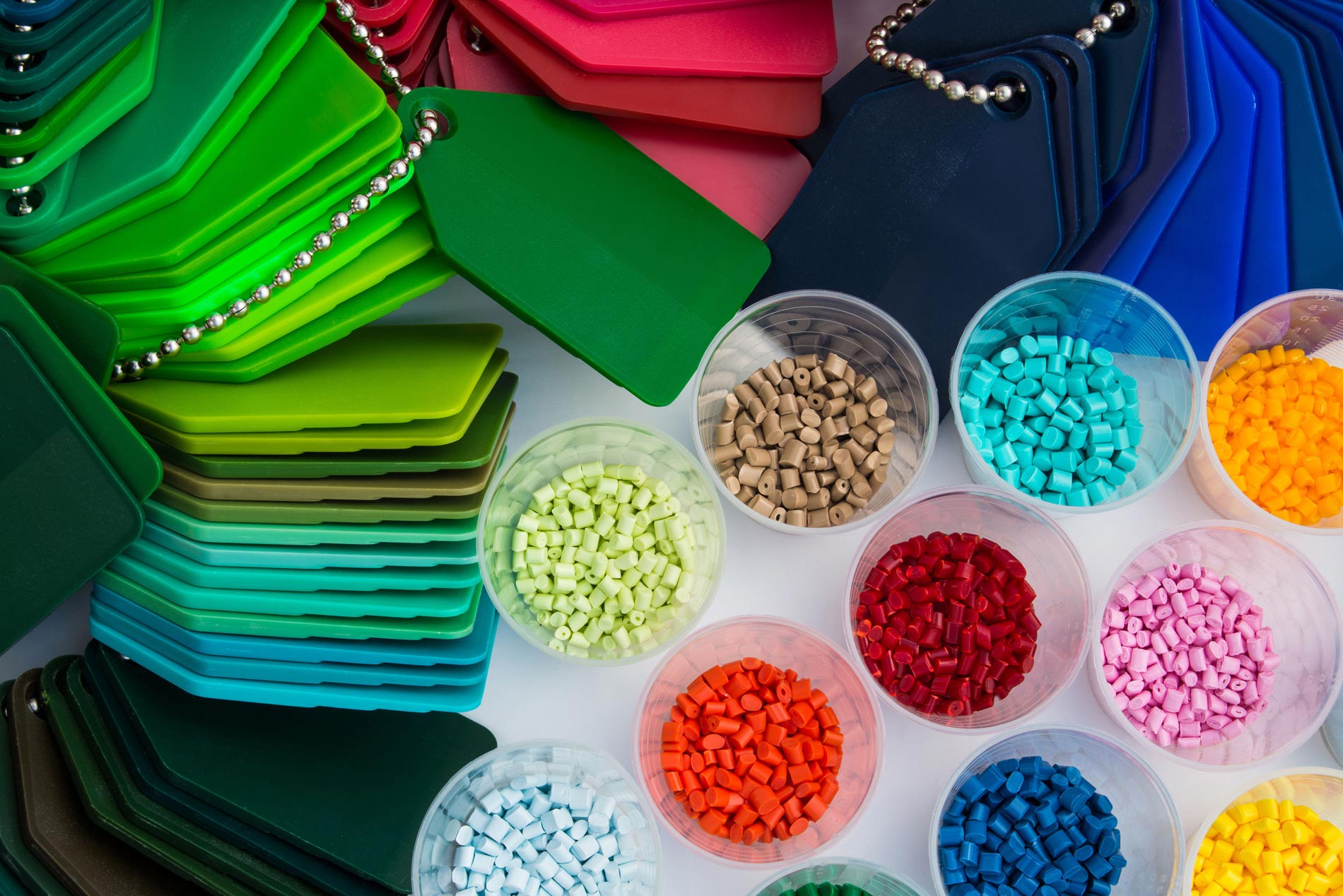L’INJECTION
plastic
The injection technique is ideal for manufacturing moulded objects, even if they are bulky or complex. Since it is a very quick technique requiring only one stage, injection is often used to produce objects in large quantities.
The injection process consists in pouring plastic granules in a heated hopper in order to feed a worm screw. When going through the extruder barrel, the warm plastic is compressed and kneaded by the rotating screw until a homogeneous paste, without any air bubbles, is obtained. At the end of the tube (extruder barrel), the material, which is under pressure, is ejected toward an orifice and is poured into a cold closed mould.
When cooling, the plastic hardens in the mould. The mould can then be opened giving way to the finished or semi-finished product!
INJECTION BLOWMOULDING
plastic
This is the most used method for producing bottles, vials and other small bottles. It requires a preform, produced via injection.
Once the body of the preform has been heated, it is stretched to the bottom of the mould using a rod through which a very powerful air jet is blown. The preform perfectly hugs the shape of the mould which, once cooled (as well as the material) opens giving way to the end product.
EXTRUSION
plastic
Extrusion allows long lengths of semi-finished products to be obtained, such as optical fibres, cables or line pipes.
The extrusion process starts in the same way as the previous one: the granules reach the extruder and are heated in a tube with a rotating worm screw that passes through it. However, once the substance has been homogenised, it is poured into a die instead of a mould in order to obtain the wanted shape.
Once cooled, the product is cut to the desired length.
EXTRUSION BLOWMOULDING
plastic
This variant is ideal to produce thin and flexible products such as garbage bags or plastic film.
The initial principle is the same as for extrusion, with the difference that the plastic substance which has become hot and malleable is blown up with compressed air at the end of the extruder: a long bubble rises vertically.
Once cooled, rollers flatten it and the sheath obtained is wound onto reels.
THERMOFORMING
plastic
The thermoforming process is applied to manufacture hollow geometric objects such as cups or yoghurt pots. It is a second transformation process since it requires plates of plastic material obtained either through extrusion or calendering.
The plastic plate is placed in a frame to keep it above the mould while it softens due to the heat. The mould is brought close to the plate, and vacuum is produced between the plate and the mould via an aspiration system. Both elements must be perfectly pressed against each other. When the mould cools, the plate can then be unmolded. The surplus material that remains in the frame is cut out.
La plaque de matière plastique est placée dans un cadre pour la maintenir au dessus du moule pendant qu’elle est ramollie sous l’action de la chaleur. Le moule s’approche de la plaque et à l’aide d’un système d’aspiration, on fait le vide entre la plaque et le moule. Les deux éléments doivent être parfaitement plaqués l’un à l’autre. Ainsi, lorsque le moule refroidit, on peut démouler la plaque. Le surplus de matière resté dans le cadre est découpé.
CALENDERING
plastic
Calendering is a process used to produce plastic film or sheets (coatings, sheets, synthetic material). It is better suited to large series than the extrusion technique and also produces higher quality products.
The thermoplastic material is melted, and then passed through various heating cylinders which, by pivoting slightly at different speeds, allows the material to be smoothed to a thin film.
The film obtained is then cooled and wound onto large reels.
